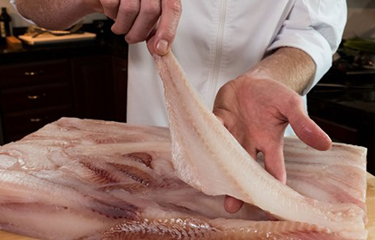GAPP exploring how to best position pollock during COVID-19 recovery

The nonprofit trade group Genuine Alaska Pollock Producers (GAPP) is trying to determine the best way to market its fish during the coronavirus crisis, which has caused a massive shift in seafood buying preferences globally.
The issue was explored in the most recent webinar in the GAPP’s summer series, “Post-COVID Communications and the Wild Alaska Pollock Toolkit,” which took place on 5 June. According to Caryn Leahy, the vice president of global public relations firm Ketchum, who presented during the webinar, Alaska pollock is uniquely positioned to take advantage of the current situation.
“It’s truly remarkable – you couldn’t write it – how many of the buzzwords [surrounding coronavirus-era consumer attitudes] reflect the attributes unique to wild Alaskan pollock,” Leahy said.
Alaska pollock products have done well during the crisis, as frozen foods flew off the shelves at the beginning of the coronavirus pandemic and they have continued to sell steadily over the spring months, according to GAPP. The same can be said for seafood in general, with The New York Times reporting fresh and frozen seafood sales in March and April were 37 percent higher than during the same period last year.
However, Leahy said she sees Alaska pollock as capable of even more sales growth through the positioning its positioning as the optimal frozen food. A survey found that more than half of American consumers said they would buy more shelf-stable or frozen foods as a result of the pandemic.
“People are going to keep these behaviors long after the corona[virus] situation changes,” Ketchum Senior Vice President Nicole Moreo said, “because they are going to find new comfort in them.”
Making pollock America’s next comfort food won’t happen through restaurant sales – Leahy noted that although restaurants are beginning to reopen across the United States, “[levels of] dining out [are] expected to remain lower than pre-pandemic levels due to safety and comfort.”
People may trust restaurant staff to take precautions to keep them healthy, Leahy noted, but they trust their fellow diners less so. And estimates from the California Restaurant Lobby predict that when California reopens fully, some 30 percent of restaurants may stay closed for good.
These factors, coupled with record unemployment rates, suggest that Americans will be eating significantly more home-cooked meals going forward. Moreo suggested that the use of video content and digital how-tos can be leveraged to make home cooks enthusiastic about the use of pollock in the kitchen.
Moreo said statistics from research groups suggest that consumers are shifting towards healthier home-cooked meals using simple, natural ingredients. He recommended pollock be positioned as a healthy protein source, perfect for use in the kitchen.
Additionally, highly-publicized issues with the meat supply chain in the country, as well as questions about the treatment and well-being of workers in the meat industry, have also positioned seafood as a suitable protein alternative in the supermarket, Leahy said.
“It certainly remains to be seen whether this moment will have staying power, especially as it relates to long-term share of wallet, but we do think there is a cultural trend happening towards meat alternatives, and this is especially true when it comes to healthy and environmentally friendly protein sources,” Leahy said.
Leahy noted shelter-in-place orders worldwide had resulted in a noticeable benefit to the environment, resulting in clear blue skies in India and China and clearer waters in Venetian canals. That has made consumers more environmentally conscious, Leahy said, and Alaska pollock sellers “would be be well-served” by amplifying Alaska pollock’s sustainability message. Marketing a Marine Stewardship Council-certified product to customers who expect an economic recovery without environmental sacrifices should be a fairly easy goal to accomplish, she said.
“Wild Alaska pollock as the most abundant, certified sustainable fishery in the world is uniquely conditioned to deliver on this trend,” Leahy said. “Now is really the time to really lean into ‘wild Alaska pollock’ sustainability messaging.”
The next webinar in the series, “COVID-19 Consumer Data and Insights,” will take place Friday, 12 June, with R3 Consulting Principal Sharon Ripps as the presenter.
Photo courtesy of Genuine Alaska Pollock Producers






Share